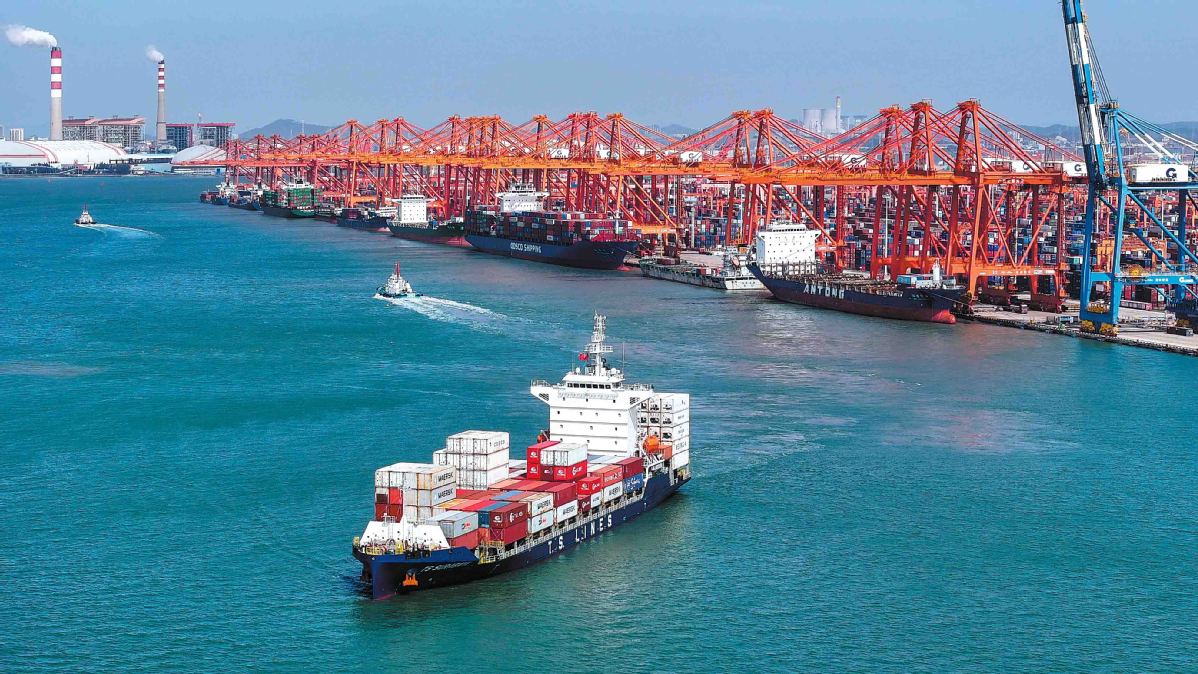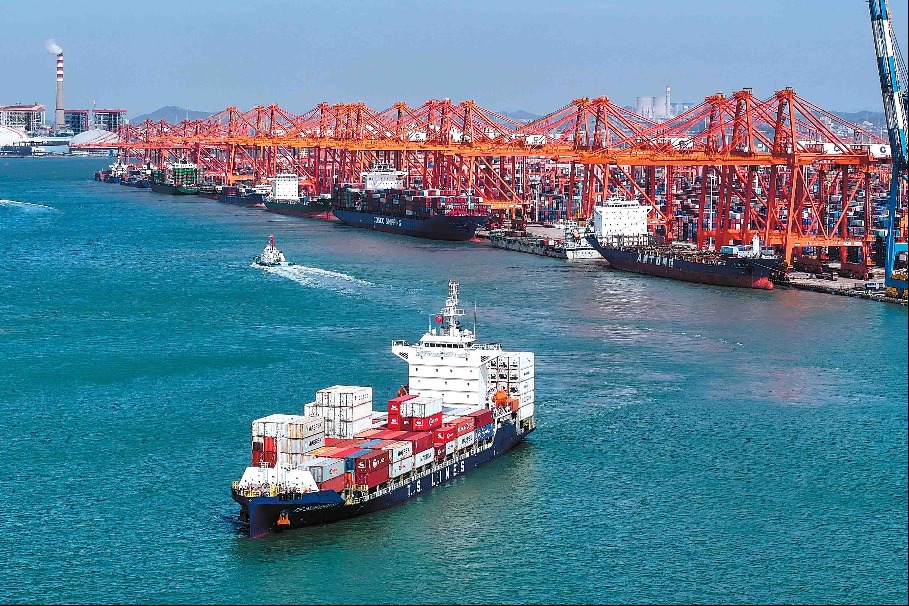Enhanced transport options deliver new business opportunities
Global commerce through New International Land-Sea Trade Corridor is flourishing


CHONGQING — The inland municipality of Chongqing, where mountains and hills account for 90 percent of its terrain, has been transforming itself into a pivotal logistics nexus, linking the world via multiple trade arteries.
In April, a freight train loaded with polyester goods departed from Chongqing to Uzbekistan's capital Tashkent, launching the first regular freight train route, which operates twice monthly, from the municipality to Central Asia.
"The 12-day route spanning 4,700 kilometers slashes the transportation time by 30 percent, empowering Chinese enterprises to better serve Central Asian markets," said Xu Meiqiong, an engineer with China Railway Chengdu Group Co Ltd.
This freight train route exemplifies how China's western landlocked regions are seamlessly integrating into global commerce through the New International Land-Sea Trade Corridor — a multimodal transportation network integrating rail, road and sea systems. Established in 2017 through cross-regional collaboration between provincial-level regions in western China and Southeast Asian countries, the corridor now pulses with commercial vitality.
In March, 200 vehicles from Changan Automobile, a leading auto brand in China, boarded a specialized JSQ freight train for export. Unlike traditional cargo trains featuring containers, it has 29 special carriages, each able to accommodate nine to 10 vehicles, which can be driven on and off the carriages. Cars were transferred directly onto roll-on/roll-off vessels to Qinzhou Port in South China's Guangxi Zhuang autonomous region, bound for Dubai.
"This integrated logistics solution reduces transport time by over 10 percent, cuts costs by more than 8 percent compared to traditional methods and minimizes potential vehicle damage," said Li Yan, deputy director of Chongqing Port and logistics office, adding that the debut of the multimodal logistics route provides a more competitive solution for Chinese automobile exports.
The ILSTC's network, extending to Europe and Southeast Asia, now connects 563 ports across 127 countries and regions. As of mid-May this year, the cargo throughput transported via the ILSTC had surged 72.3 percent year-on-year to 549,600 twenty-foot equivalent units.




































